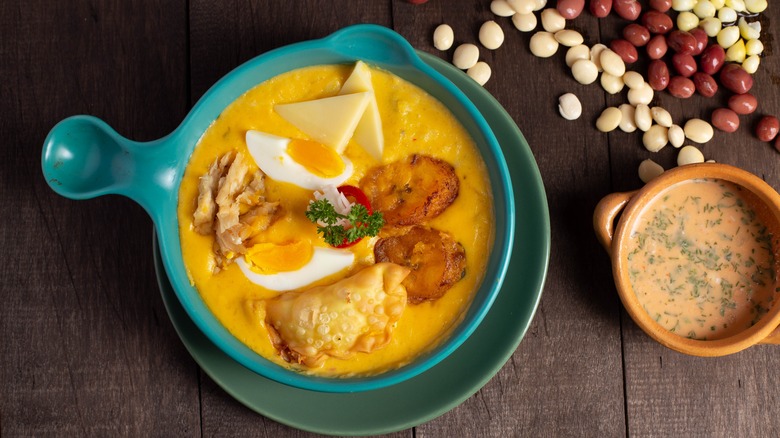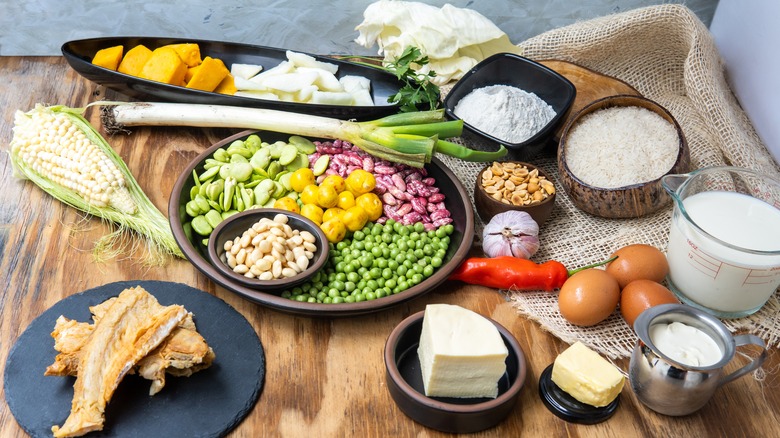Fanesca Is A 12 Grain Ecuadorian Soup Served At Easter
Easter coincides with the bountiful spring season, and Ecuadorians often take full advantage of their nation's harvest to condense an elaborate Easter feast into a single bowl of fanesca. A longstanding Easter tradition, fanesca features a milk-and-peanut broth filled with hearty chunks of salted cod and 12 different grains and legumes from the New and Old World, including white beans, rice, lupines, lentils, fava beans, corn, peas, hominy, peanuts, kidney beans, an Andean tuber known as ullucus, and two different types of squash.
The squash and peanuts are blended with milk and cream to create a thick, luxurious consistency. The soup starts with a base of aromatics and ground spices like cumin, oregano, and achiote, followed by the squash puree, then the whole beans, grains, and rehydrated salted cod. After simmering with more milk and reserved cooking liquid from the squash, the soup becomes an ultra-creamy, highly complex blend of textures and flavors. You get spicy, savory, and umami notes from the seasonings, grains, and salted cod respectively. Fresh herbs like cilantro and parsley add an herbal savoriness, while cream and cream cheese enrich the broth with yet another luxurious layer of salty, savory dairy.
As if that wasn't enough, each bowl of soup is garnished with halves of hard-boiled eggs, slices of queso fresco, avocado, pickled onions, cheese empanadas, and slices of fried plantain and hot peppers. With such a staggering list of ingredients and garnishes, it's no wonder Ecuadorians usually only enjoy fanesca once a year!
Fanesca history and cultural significance
According to Ecuador tourism brand Soleq, fanesca became associated with the Easter holiday back in the 1800s, but this special and symbolic Ecuadorian soup originated long before Easter was introduced by Spanish colonists. Fanesca began with the native Ecuadorian people's celebration of the earth's bounty, which incorporated all of the local crops harvested during the spring equinox, a day Andean natives called Mushuk Nina or the New Fire Festival.
When the Spanish arrived, they coopted the recipe along with its symbolism, adding ingredients and significance from their country and religion. In an attempt to convert Andean people to Catholicism, the Spanish fused the earthly and celestial beliefs related to the Equinox with the springtime celebration of Christ's resurrection. The 12 different grains used to make the soup are thought to represent the 12 apostles of Jesus, while the salted cod represents Christ himself. Today, families typically enjoy this highly elaborate and rich soup over the Easter holiday to celebrate the occasion and the historic fusion of prehispanic and colonizing cultures inherent in modern Ecuadorian identity.

